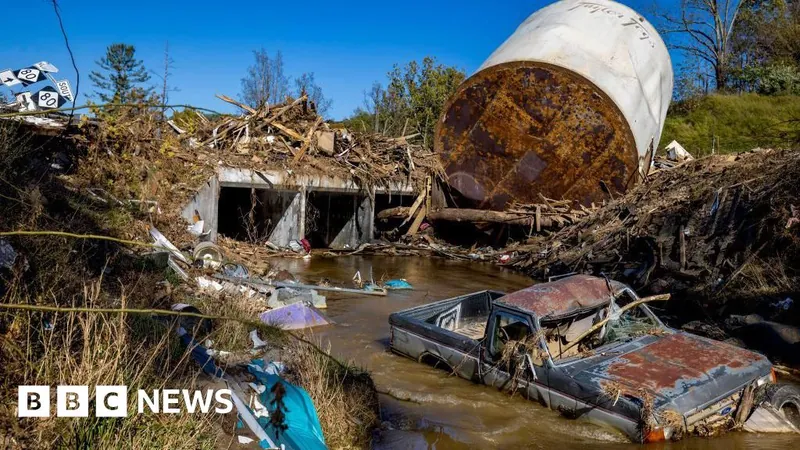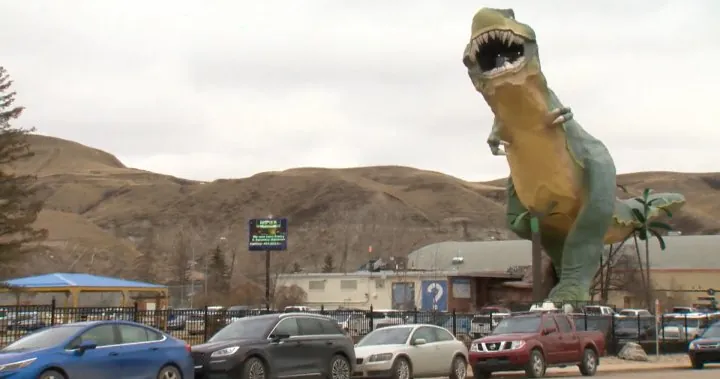
Alarm Bells Ring as Severe Cuts to NOAA Weather Services Loom
2025-03-13
Author: Amelia
Alarm Bells Ring as Severe Cuts to NOAA Weather Services Loom
In a troubling turn of events for those who rely on accurate weather data, the National Oceanic and Atmospheric Administration (NOAA) faces potentially devastating cuts that could severely reduce its workforce and compromise the vital information it provides. Engineers and meteorologists alike are raising concerns about how these reductions will impact Americans' daily lives.
Josh Ripp, a dedicated engineer known for flying into the eye of hurricanes for his work with NOAA, was among over 800 staff members let go in late February by the Trump administration through a mass email announcement. This drastic move is part of broader efforts to slash the federal workforce. Ripp, a retired US Navy officer who had previously supported Donald Trump, now finds himself uncertain about his future and the implications these cuts have on NOAA's mission.
Reports suggest that the administration is considering further cuts, potentially axing more than 1,000 additional staffers from NOAA. Such drastic measures could result in the loss of up to 20% of the agency's workforce, which would hinder its ability to deliver timely and accurate weather forecasts—services that countless Americans depend on for their daily activities.
NOAA’s data underpins not just smartphone weather apps but also local meteorological reporting. It's essential in guiding decisions from what to wear to whether it's safe to venture outside during severe weather events. Airlines and federal aviation officials depend on these forecasts to ensure safe skies, while retailers rely on accurate weather predictions to manage deliveries efficiently. Shipping industries and fisheries, particularly in sensitive environments like the Great Lakes, also count on NOAA's updates for crucial information regarding environmental conditions.
"The accuracy of weather forecasting is often taken for granted," cautioned Andy Hazelton, a former NOAA climate scientist whose expertise in hurricane modeling is now absent due to the layoffs. "With offices understaffed, forecasts are going to decline in reliability."
The impact of these cuts goes beyond governmental operations; they are likely to disrupt essential services used by millions of Americans. Hurricane Hunters—elite flight teams responsible for gathering real-time data in storms—are already feeling the strain, according to Lt. Kerri Englert, a flight director reinstated after initial layoffs. She warns that fewer flights mean crucial data won’t feed into forecasting models, jeopardizing community preparedness during hurricane season.
Additionally, lesser-known but vital scientific practices, such as balloon launches in Alaska for atmospheric assessments, have been curtailed, further hampering NOAA's forecasting abilities. "We've seen reductions that can have ripple effects on national forecasts," an agency official noted, emphasizing NOAA's commitment to serving the public despite mounting challenges.
Concerns are mounting that the agency's crucial climate initiatives, including research into utilizing artificial intelligence in forecasting deadly heat waves, could also face deep cuts. Zach Labe, a former NOAA scientist who specialized in this area, noted that the loss of key personnel in these sectors jeopardizes national weather model development.
The private sector, too, is closely tied to NOAA's data provisions. Companies like AllisonHouse, which provide customized weather visuals, rely heavily on accurate NOAA information. "Without NOAA’s unique satellite capabilities, we're in serious trouble," said Chief Technology Officer Ryan Hickman.
As discussions of workforce reductions continue, the call to uphold NOAA's integrity and mission grows louder from within the scientific community. Daniel Swain, a climate scientist at UCLA, expressed alarm at the administration's disregard for sound planning. “Those who understand the urgent need for responsible forecasting and preparation are horrified at the prospect of such cuts,” he stated.
Meanwhile, in Florida, Ripp continues to grapple with uncertainty. During his brief hiatus from NOAA, he contemplated joining a private firefighting firm, yet the possibility of remaining with NOAA remains uncertain. His hopes of returning to a mission he deeply believes in are hindered by what he perceives as a chaotic approach to restructuring the agency.
The sheer scale of the potential cuts raises real questions about the future of weather forecasting in America. As the nation’s climate and strategic preparedness against disasters hang in the balance, one can’t help but wonder—will the Trump administration heed the warnings and prioritize the fundamental need for accurate weather data? Only time will reveal the true impact of these sweeping changes.









 Brasil (PT)
Brasil (PT)
 Canada (EN)
Canada (EN)
 Chile (ES)
Chile (ES)
 Česko (CS)
Česko (CS)
 대한민국 (KO)
대한민국 (KO)
 España (ES)
España (ES)
 France (FR)
France (FR)
 Hong Kong (EN)
Hong Kong (EN)
 Italia (IT)
Italia (IT)
 日本 (JA)
日本 (JA)
 Magyarország (HU)
Magyarország (HU)
 Norge (NO)
Norge (NO)
 Polska (PL)
Polska (PL)
 Schweiz (DE)
Schweiz (DE)
 Singapore (EN)
Singapore (EN)
 Sverige (SV)
Sverige (SV)
 Suomi (FI)
Suomi (FI)
 Türkiye (TR)
Türkiye (TR)
 الإمارات العربية المتحدة (AR)
الإمارات العربية المتحدة (AR)